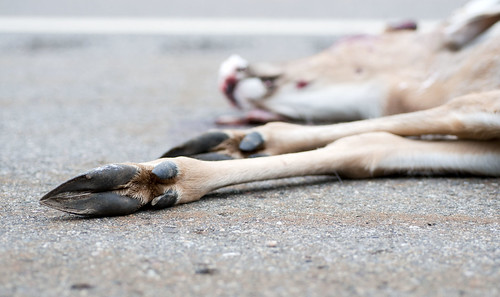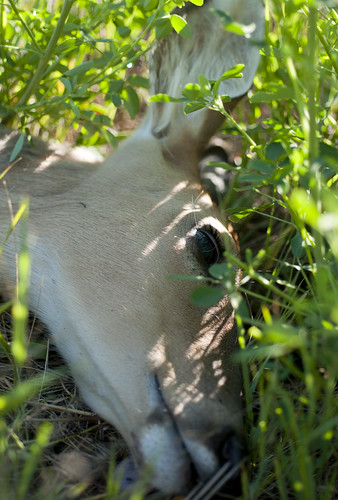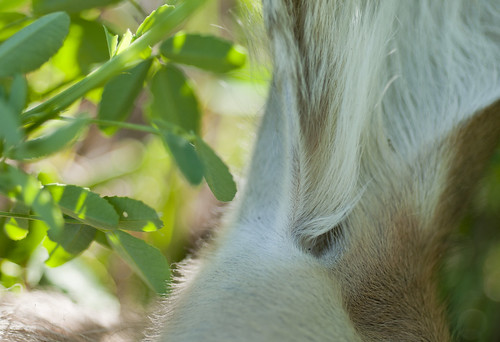Though many accidents are unavoidable, some steps can be taken to decrease the chance of hitting a deer while driving.
• Be especially vigilant at dawn and dusk, as these are times when deer most frequently travel. This doesn't mean deer won't jump into the road at any other other time, however; morning hours, when the sun is climbing in the sky, are still just as dangerous, as are evening hours, when the sun is setting.
• If the sun is in your eyes, slow down. I have found many deer are hit along stretches of road where the sun is shining against the driver during the aforementioned times of day.
• If one deer is crossing the road, there's a very good chance that more will follow. Slow down, and stop if necessary, until you are sure that all of the deer have crossed. Proceed cautiously and slowly.
• Even if a deer looks to be stopped on the side of the road, or turning away, proceed with caution. Deer are easily spooked and can change their mind in an instant.
• Go the speed limit. This can't be repeated enough. The speed limit in Michigan's Upper Peninsula, for example, is 55 miles per hour. This can be pushed to 60 miles per hour, but generally, go no faster than the posted speed limit. Obeying the law will cut down on slower-animal deaths as well, especially turtles, snakes, raccoons, and foxes.
In the past several days, I've photographed two different deer that have been hit on M-28, the deathtrap of a highway that runs between Marquette and Munising. The first was a yearling buck with tiny velvet nubs, and the second, this morning, was a beautiful doe who had swollen teats – evidence that somewhere, there's a hungry, motherless fawn.
Last week's button buck was tiny. His legs and neck were pencil-thin, and he'd still been in the process of shedding his winter fur, resulting in a strange, patchy appearance. The velvet nubs on his head had severe road rash, bleeding profusely; foam had spilled from his nostrils as he died. It was gruesome, and one of the most disturbing results of a car-deer collision I've seen. As I left, the turkey vultures were already on their way.
This morning's doe, however, was beautiful. The scene wasn't gory; her back end pointed toward the highway, while her face was nestled amongst the clovers and grass. So recently had she died, the flies hadn't yet discovered the body; her eyes still looked so alive.








My worst experience was seeing a deer trying to get up after being hit on Rt 117. I pulled over, not knowing what to do. A pickup had pulled over ahead of me, and I don't know if it was the vehicle that had hit it, or if the occupant was going to finish off the deer. Just then, a semi came from the opposite direction -- I don't know if it hit the deer or not. That scene soured my trip back to Ann Arbor. The secondary roads seem to have an inordinate number of deer kills, mostly because people drive too fast on them.
ReplyDeleteI am so afraid that one of these days, I'll see a deer get hit. I've seen a lot of near-misses and those are upsetting enough. It's incredible how fast people think they can go on back roads – even on Lakewood Lane, I see trucks fly by going over 40mph. I don't even want to think about how many turtles are hit by idiots who drive too fast.
Delete